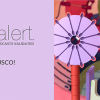Suzhou is a major city located along the southeastern edge of Jiangsu Province in eastern China. Bordered by the Yangtze River in the north, Zhejiang Province in the south, Lake Taihu in the west and approximately 70 miles west of Shanghai, Suzhou is a beautiful city that’s easy to get to and it’s the location for this year’s Asia Pacific Conference.
Getting to Suzhou
Travel to Suzhou is easily accessible via three convenient area airports servicing non-stop flights from North American: Shanghai Hongqiao International Airport (SHA) offers bullet train service to Suzhou, which is approximately a 50-mile, 30-minute trip; Pudong International Airport (PVG) is approximately 65 miles from Suzhou, an hour and half drive; and Sunan Shuofang International Airport (WUX) is approximately 14 miles from Suzhou, a 30-minute drive.
Traveling within Suzhou
Suzhou has two metro lines in service with two more under construction. Line 1 runs east-west, and Line 2 runs north-south. The metro ticket prices range from 2 to 6 Yuan depending on the distance. Taxis are available and start at 10 Yuan using metered rates. Padicabs can be found in high traffic areas and start at 5 Yuan. There is a convenient bus system which costs 2 Yuan; travelers can obtain a bus map at their hotel. Bicycling is a popular method of getting around, and travelers will find many bike rental shops throughout the city, with bike rentals costing approximately 25 Yuan per day.
Visa Requirements
A visa is required for travelers visiting from the United States. Details on obtaining a visa can be found at www.cnto.org/plan/go/visa-info, and a complete list of visa office locations can be found at visiting www.china-embassy.org/eng/zmzlljs/t84229.htm.
History
Suzhou, the “Venice of China,” is known for its elegant stone bridges, canals, flowing water, and noteworthy architecture. As one of the oldest cities in the Yangtze Basin, its history dates back more than 2,500 years.
With the completion of the Grand Canal during the Sui dynasty, the layout of the city included streets and rivers running parallel with waterways in the rear of buildings and the streets in the front. This design allowed Suzhou to flourish as a vital trade route. With the prosperous business of silk and other popular products along the waterways, Suzhou has long been a metropolis of industry and commerce on the south-eastern coast of China. In 1981, Suzhou City was listed by the State Council as one of the four cities of historical and cultural heritage protection And since then, the city developed into one of the most prosperous one in China. As the largest industrial city in China, Suzhou continues to increase developments such as the Singapore Industrial Park (SIP), which boasts five-star hotels, the iconic Lake Jinji, and Asia’s largest Ferris Wheel.
Culture
Suzhou is the birthplace of the flourishing Wu Culture providing a series of attractive heritages, including the melodic rhythm of Kun Opera and Ping Tan (Suzhou ballad), the Wumen Fine Arts School, and a large number of scholars. Given the nickname “City of Scholars,” many notable natives throughout history have had an influential role on Chinese society including Sun Tzu, author of The Art of War, Fan Zhongyan, a prominent politician in Song Dynasty, Feng Menglong, a writer/poet in the Ming Dynasty, Tang Yin, a painter and calligraphist and poet in the Ming Dynasty, and more. In contemporary times, notables include Yen Chia-kan (a.k.a. C.K. Yen), the President of the Republic of China during 1975-1978, Tsung-Dao Lee, a Chinese American physicist and a Nobel Prize winner for 1957 Nobel Prize in Physics, Chien-shiung Wu, a well-known American physicist, and I. M. Pei, a Pritzker Prize-winning Chinese American architect.
Cuisine
Most famous for its vegetable and fish dishes, Suzhou cuisine emphasizes fresh, subtly sweet flavors and exquisite presentation. It commonly features freshwater fish, especially eel and carp, which are usually steamed. Traditional dishes include the Squirrel-shaped Mandarin Fish, Steamed White Fish, Water Shield with Egg Flakes, Moon Cakes, Fengzhen noodles, Aozao noodles, Semen euryales, Fish Flavor Spring Rolls, Youtunjinjiao (Fried Steamed Bun), Sugar Porridge, Jiuniang Cake, and more.
Nightlife & Entertainment
The teahouse culture is strong in Suzhou, and many teahouses schedule regular performances of Kunqu opera and Pingtan, two exquisite forms of performance art sung in local dialects. There are a variety of teahouses and trendy cafe/bars on Pingjiang Lu. Many western-style bars can be found in the Suzhou Industrial Park.
Shopping
Internationally renowned for its rich heritage of silk manufacturing, Suzhou is also recognized for its high quality local production of embroidery, calligraphy, paintings, and sandalwood fans.. These local items can be found across the city in small local shops as well as cultural attractions. Additionally, established in the late 1980s around an already thriving local silk industry, Suzhou developed one the premier wedding dress markets, which consists of more than 700 wedding related outlets and is the center of wedding dress designing, manufacturing, and merchandising.
Accommodations
There are more than 100 hotels within Suzhou offering visitors a wide variety options of hotels from budget to luxury with a combination of local and international brands such as Crowne Plaza, Hyatt, Marriott, and Shangri-La, and InterContinental. Hotel construction is booming with the development of local economy and tourism. New properties scheduled to open in the next four years include W Suzhou, The Westin Suzhou Xiangcheng, Fairmont Suzhou and others.
What are you waiting for?
Images and content courtesy of Suzhou Tourism















